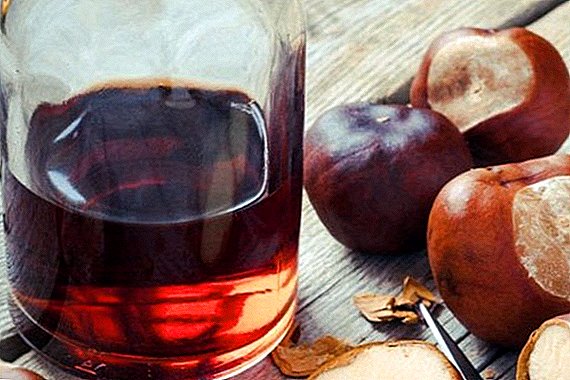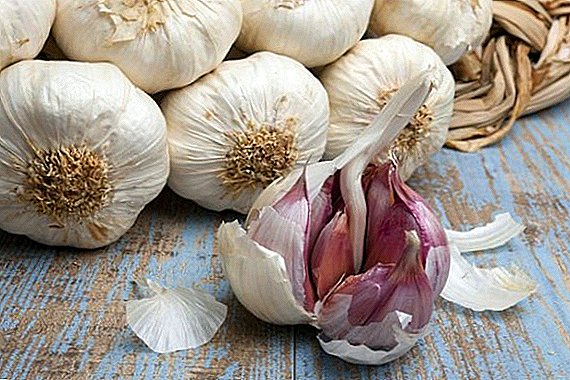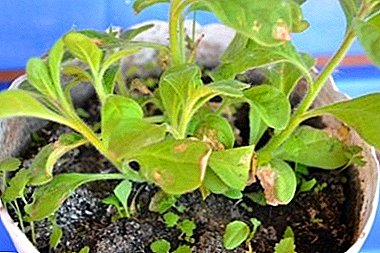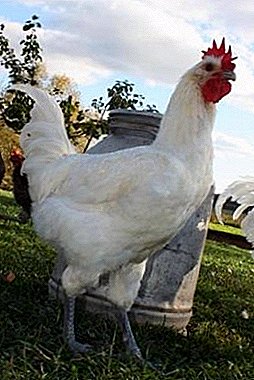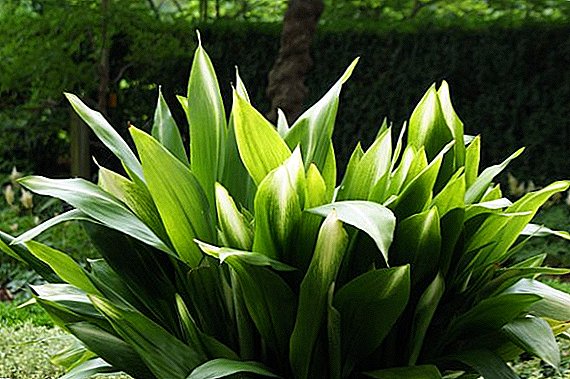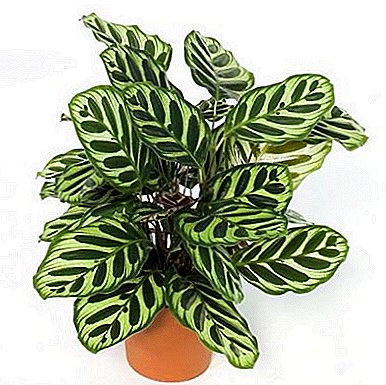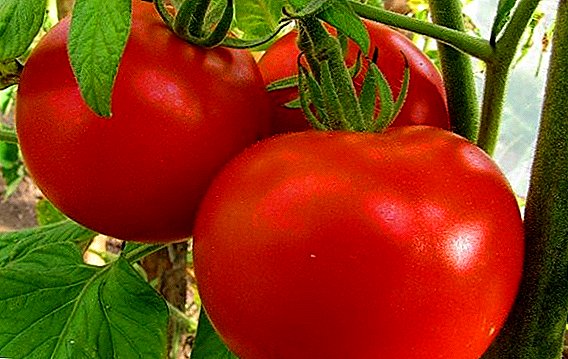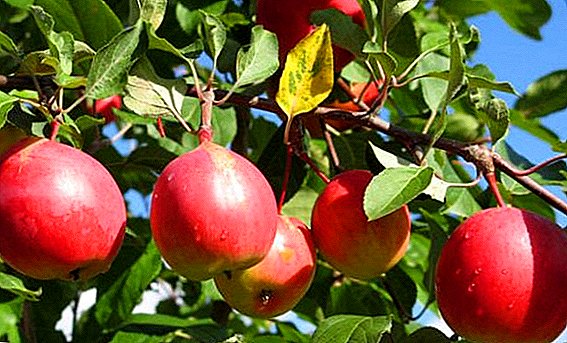 Perhaps not a single garden without an apple tree in our latitudes. The culture is unpretentious to the weather conditions, not capricious in growing, and yet the work of breeders every year brings gardeners even stronger varieties that have all the best and best characteristics.
Perhaps not a single garden without an apple tree in our latitudes. The culture is unpretentious to the weather conditions, not capricious in growing, and yet the work of breeders every year brings gardeners even stronger varieties that have all the best and best characteristics.
Breeding history
Apple "Screen" - hybrid variety autumn ripening. It was obtained in 2002 as a result of pollination of the variety “Yantar” by the pollen of the “Gem”, “Orange” and “Zvezdochka” varieties.
 Authorship and a patent for a hybrid belong to L. A. Kotov, the development was carried out at the Sverdlovsk station.
Authorship and a patent for a hybrid belong to L. A. Kotov, the development was carried out at the Sverdlovsk station.
Due to its characteristics, the variety spreads rapidly in the gardens of the Urals and surrounding areas.
Bred for a harsh climate, with good winter hardiness, it has the prospect of growing in regions with cold winters and in the southern mild climate.
Biological features of the variety
Apple "Screen" received good reviews among amateur gardeners and farmers - we will take a closer look at its description and photo, the quality of culture.
Tree description
The tree is distinguished by its rapid growth, smooth greenish bark, and brown, thin shoots. Crohn rounded, sprawling, with straight, not too thickly growing branches, the growth of branches directed from the trunk upwards.
The foliage is dark green, in the form of a wide oval, with a jagged edge. Leaves are opaque, located on long petioles. The entire lamina is covered with thin (like a mesh) veins with a pronounced central vein, clearly separating the sheet in half along.
Apple varieties with sweet and sour taste of fruits for your garden: "Shtreyfling", "Bogatyr", "Semerenko", "Lobo", "Melba", "Pepin saffron", "Dream", "Silver hoof", "Orlik", "Zhigulevskoe".
Fruit Description
Fruits of an apple-tree of an equal roundish form, the average size: weight fluctuates from 60 to 100 grams. Glossy peel covered with a touch of wax. During ripeness, the fruits become yellow-green in color with a bright pink-red blush. Apple distinctive feature - a swollen funnel with a tubercle of brown color.  Cream-colored flesh, dense, juicy, fine-grained structure. The taste of sweet and sour apples with a pleasant aroma. In a large heart, open seed chambers, seeds are dark brown, small.
Cream-colored flesh, dense, juicy, fine-grained structure. The taste of sweet and sour apples with a pleasant aroma. In a large heart, open seed chambers, seeds are dark brown, small.
Pollination
"Screen" is a samobzpledny variety, it is perfectly pollinated by other varieties of apple trees growing next to it. Suitable pollinators there will be the same autumn varieties: Oryol Striped, Scala, Uspenskoye, and Sun.
Gestation period
Fruiting apple starts on fifth year of development, fruiting is regular. Fruits ripen in August-September. You can check the ripeness by breaking the fruit in half: if the seed is dark brown, then the apple has ripened.
Yield
Yields are quite high - on average, up to 20 kg of apples. From an adult tree, fruitful not the first year, collect up to 65 kg. During the cultivation of the variety, over one hundred centners of fruit was harvested per hectare in farms. 
Winter hardiness
"Screen" is resistant to cold weather, painlessly tolerates sudden changes in temperature and return frosts.
Application
Fruits are well stored, but if they are allowed to overripe, the shelf life will decrease. Store the harvest in a cold place (cellar, unheated balcony). Thus, it can also be consumed fresh in the winter: a shelf life of up to five months.
Fruits are suitable for processing: they make juices, compotes, jams and preserves.
Did you know? In different nations, the apple is a versatile symbol: among the ancient pagans of the Slavs, Vikings and Celts, it is a symbol of unfading youth; in China, a symbol of appeasement; Scots and Irish people used fruit for divination, and in heraldry it is a symbol of peace depicted on many coats of arms.
Planting apple seedlings "Screen"
Difficulties in how to plant an apple tree, no. Before the procedure, you need to examine the sapling, cut off the damaged shoots and roots, process the slices with crushed coal. The main requirement for a seedling is a healthy root system and dormant buds.
Optimal timing
The apple tree is planted in the spring on cloudy and cool days. But the best time is autumn, in this case the tree will start to grow and develop fully next year.
Choosing a place
Culture is unpretentious to the composition of the soil, but it is better if it is fertile and neutral. Poor neighborhood - closely growing old trees with an extensive root system, they will deprive the sapling with nutrition and moisture, close from sunlight. Place to pick open, not prone to drafts.
Stepwise landing process
Autumn landing. A couple of months before planting, dig a hole in order to sod the soil. The size of the pit about 50x50 cm, focus on the length of the roots. The best time to plant in the fall is after leaf fall. During this period, the sapling will begin to actively build up the root system, and the aerial part will be at rest until spring.
In order not to wake dormant buds, do not put fertilizer on the bottom of the pit. To support the seedling, you need to drive a peg one and a half meters long into the bottom of the pit. The roots of a young tree straightened, placed on the bottom of the hole and covered with earth. At the same time, the root neck is flush with the edge of the pit, and the soil is carefully tamped down.
A sapling is tied to a peg and must be watered, even if it rains. After watering, the land can significantly subside: you should still pour the soil. Closer to winter, mineral fertilizers are scattered over the surface of the ground — they will lie under the snow until spring, and then they will seep to the roots with melt water, feeding them. Spring landing characterized by the fact that fertilizer must be put in the planting hole, if the soil is acidic, wood ash is added. As a fertilizer, you can use the "Universal Universal": it is mixed with fertile soil, put a pit in the bottom and pour out a bucket of water there too.
The seedling is lowered to the bottom, straightening the roots, covered with soil. After they carry out watering - when the soil has subsided, add more. The root neck of the seedling is flush with the surface. To protect the tree from the wind, pegs are driven in a circle.
Did you know? In the Christian myth of the forbidden or tempting fruit, it is not the apple that is mentioned, it is simply a fruit torn from the heavenly tree. Perhaps the association with the apple was due to the homonyms: in Latin "malum" - "evil" and "mālum" - "apple".
Seasonal care features
Caring for an apple tree begins with planting. If you planted it before winter, do not forget to sprinkle fertilizer, so that in the spring the tree will already absorb useful substances. If in the spring - immediately after planting, the trunk should be cut to a length of two or three buds, this will provoke branches to active growth. The sapling also shortens the lateral branches, but only if they are longer than the central stem.
Soil care
In the spring, under a tree in the absence of precipitation, once a week they pour out a bucket of water for a month and a half. Then watering is reduced to two to three weeks. In the heat and drought, they pour water once every two weeks with two buckets of water.
After watering, the trunk circle is covered with mulch: compost, rotted manure, biohumus, straw or dry grass is put on top.  Mulch, firstly, will serve as an ideal environment for earthworms, which will do the work for you to loosen the soil, and secondly, will restrain the growth of weeds. From the loose soil of the root system of an apple tree, it is easier to extract moisture, food and oxygen, therefore from time to time it should be wielded with a chopper. Weeds also need to get rid of, so they do not deprive the growing seedling with nutrients.
Mulch, firstly, will serve as an ideal environment for earthworms, which will do the work for you to loosen the soil, and secondly, will restrain the growth of weeds. From the loose soil of the root system of an apple tree, it is easier to extract moisture, food and oxygen, therefore from time to time it should be wielded with a chopper. Weeds also need to get rid of, so they do not deprive the growing seedling with nutrients.
Important! During intense heat, it is advisable to spray a young apple tree, but this should be done in the evenings, when solar activity subsides - this will save the foliage from burns.
Top dressing
In April, the first dressing is carried out: five buckets of humus with half a liter of urea are laid out in a tree near the trunk as a mulch. A month later, the leaves are sprayed with an aqueous solution of sodium humate (1 tablespoon liters per 10 liters of water): 10 liters per tree.
During the flowering period make this solution:
- urea - 150 g;
- superphosphate - 250 g;
- potassium sulfate - 200 g;
- stir in 50 liters of water, insist week.
Important! Proper application of dry fertilizers in the trunk circle: about 50-60 cm should be pulled back from the trunk.For the third feeding in a 200-liter barrel with water dilute the kilogram of nitrophoska and 20 g of sodium humate. Feeding is carried out in a circle around the trunk, the flow rate is 30 liters under a tree. In the rainy period, fertilizer is applied in a dry form.
On hot summer days, the leaves are sprayed, adding wood ash to the water.
Fight against diseases and pests
In early spring, preventive treatment is carried out for fungal diseases and insect larvae: trees are sprayed with a solution of urea (700 g per 10 liters of water).
Important! Processing should be carried out while the kidneys are in a dormant state, otherwise the solution will burn them.
The second insect treatment is done after the trees have faded. The treatment is carried out with a 10% solution of any insecticide preparation (Actellic, Karbofos). Against diseases, preventive treatments are carried out. preparations containing copper.
In the autumn, after harvesting, the trees are sprayed for the third time - with 5% urea solution. Spraying need to have time to hold up to leaf fall. The solution will protect against diseases and parasites.
For insect control you can attract birds to the garden - if you have troughs hanging every year, the birds themselves will know where there is food for them. If there is a need for special preparations, the following will help to control pests: "Benzofosat" and "Karate Zeon" - both drugs can be used during the flowering period, as they are safe for bees.
Learn how to defeat the aphids attacking your apple tree.
The variety "Screen" is resistant to many diseases, including scab, often affecting fruit trees. But during frequent precipitations there is still danger. Prevention is carried out in early spring using Bordeaux liquid, copper oxychloride or copper sulfate. An effective remedy against fungal diseases - the drug "Hom". 
Pruning
We will understand when you need to prune an apple tree. For the first time pruning spend sapling after landing, shortening the skeletal shoots that are longer than the trunk. According to the rules of pruning it is carried out either in spring or in autumn. Summer can not be cut off, because during this period there is an active circulation of juice inside.
Thinner branches will take a pruner, if you need to cut strong and thick branches - it is better to take a saw. All tools must be sharply honed, otherwise the edges of the slices will heal for a long time. For processing cuts do garden var. You should know that the old dry branches are treated immediately, smearing first with a mixture of copper sulphate and lime (1:10). Young flexible branches are processed by the barb the next day.
After the first pruning, the tree can rest from the procedure for two or three years. Remove only damaged shoots. Subsequently, the branches are shortened by two thirds, forming a crown: remove the branches that interfere with the growth of the main shoots, which grow inside the crown and get out of shape.
Important! Formative pruning is carried out before the tree reaches the age of five. A tree with a shaped crown does not need pegs supporting it, and is ready for fruiting.
Frost and Rodent Protection
To protect against frost, the trunk circle covers the mulch: peat and compost in equal parts. The trunks of the trees are whitewashed and covered with lapnik branches, tightly wrapped so that the rodents do not get there. Trunks need to be tied up until the bark of the tree is so hard that it is no longer a treat for mice and rabbits.
Lower branches of adult apple trees smear the following solution: 100 g of wood glue, 0.5 kg of copper sulphate, 1 kg of clay and 3 kg of hydrated lime - all this per 10 liters of water.  In winter, it is advisable to trample snow in a circle and remove it from the branches so that they do not break under its weight.
In winter, it is advisable to trample snow in a circle and remove it from the branches so that they do not break under its weight.
Apple "Screen" received good reviews from gardeners, it is eagerly grown, especially in regions with a cold climate. Gardeners celebrate disease resistance, high yields and excellent taste characteristics.



